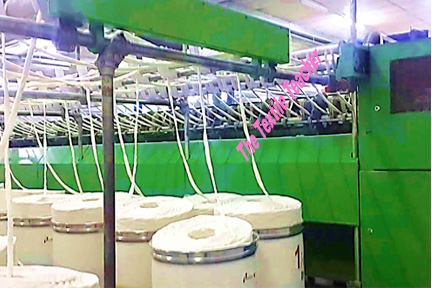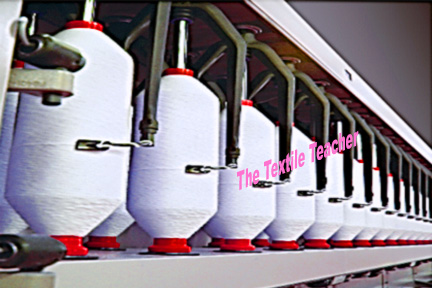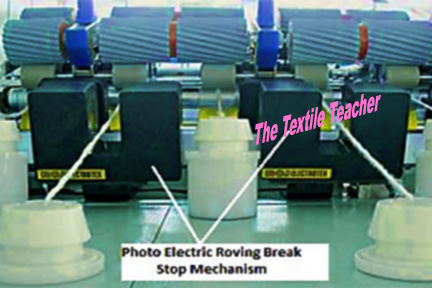Speed Frame Machine
The speed frame is an intermediate machine between draw frame and ring frame in which fibers are converted into low twisted strand called Roving. Input of speed frame is sliver and its output called roving. The speed frame is called by various names in industry as Simplex, Roving frame, Fly frame.

OBJECTIVES OF SPEED FRAME MACHINE
- To reduce weight or mass per unit length by drafting the sliver.
- Conversion of sliver into roving.
- To insert small amount of twist.
- To wound twisted strand on the bobbin.
- To make tapper or conical shape of the bobbin.

PARTS OF ROVING FRAME & ITS FUNCTION
-
Creel:
Creel is used to guide the sliver. Creel portion is present above the can. Creel helps Sliver along the way to arrange a draft without any mess.

-
Drafting:
To reduce weight or mass per unit length by drafting the sliver. In the drafting zone pneumatic pressure is applied over the drafting rollers and the speed difference between the drafting rollers, drafts the sliver to desired hank.

-
Twisting:
The drafted slivers delivered are too thin to hold themselves together and slight twist is needed to strengthen the roving to prevent breakage during next processing. The drafted strands of fibres are passed from drafting zone to flyers for twisting.

-
Winding:
The flyers provide twist to the fiber strands and make the roving strong enough to be wound onto bobbins and processed in a ring frame.

-
Building:
The up and down traversing of the bobbin rail makes the bobbin to be conical or tapper shaped.

-
Doffing:
When the roving bobbins become full the machine is stopped and doffing takes place to remove full bobbins and to fix empty bobbins with required length of roving manually wound on the empty bobbins through Flyers for continues working.

-
Roving & Sliver Breakages Stop mechanism:
Photo electrical sliver and roving break stop mechanism. When-ever sliver or roving breaks due to any reason machine stops.









